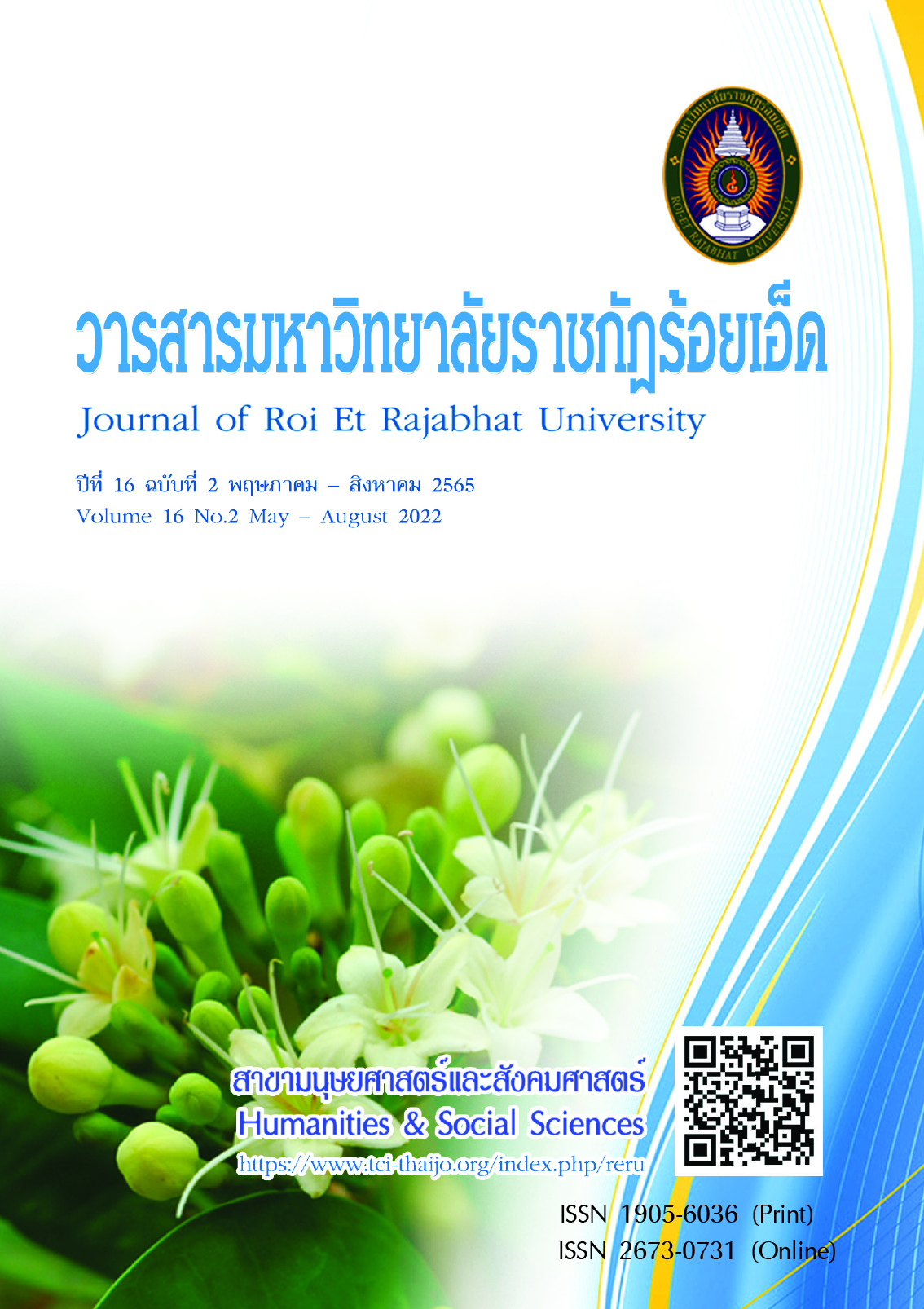An Arrangement Process of Isan Folk Music Melodic Patterns of Kalasin College of Dramatic Arts: Lai Khao Tong Lom
Keywords:
Music Analysis, Isaan Folk Music, Kalasin Dance CollegeAbstract
The process of creating Northeastern folk music patterns of Kalasin College of Dramatic Arts:
Lai Khao Tong Lom" was the qualitative research. The research applied research methods in musicology, studied of data from fieldwork, and studied of various information documents. The objectives were
1) to study the history of Isan folk music patterns of Kalasin College of Dramatic Arts, the pattern of
Khao Tong Lom, and 2) to study poetry and analyze the folk music patterns of Kalasin College of Dramatic Arts, the pattern of Khao Tong Lom.
The research results found that the history of of Lai Khao Tong Lom (the rice pattern of the wind) was written by Thuenthongjai Chuenrum. There were 2 parts with a slow and fast tempo. The pattern applied for playing and compiling to use in the performance. The concept of writing and the outline of the pattern brought from Lai Pong Lang. The concept of writing according to the author's imagination were characterized by the fluctuation of nature in the fields, the wind that blows the green rice leaves into waves and the cold wind creates an atmosphere. The illustration of the rice leaves slowly flying towards the windy season that made rice leaves fly faster. Therefore, there were two lines of melody: slow and fast, illustrate the nature in the surroundings and the musical imagination was in line with the way of nature. Causing a melody of
Lai Khao Tong Lom.
The analysis results of Lai Khao Tong Lom found that there was a two-part structure, part A, B. Each part included 6 sentences in the song. The pattern of Lai Khao Tong Lom had been used Motif, question- answers, the development of the sequence melody (Extension), the development of the repetition style, the development of the state itself, and the idioms for ending Isaan folk songs. Lai Tong Lom used Pentatonic Scales which included A C D E G notes and Hexatonic Scales. The Chord progression consisted of i - III - iv - i, the perfect cadence ending.
References
เฉลิมศักดิ์ พิกุลศรี. (2560). การเปลี่ยนแปลงทางดนตรี. ขอนแก่น: โครงการตำราบัณฑิตศึกษา สาขาดุริยางคศิลป์ คณะศิลปกรรมศาสตร์ มหาวิทยาลัยขอนแก่น. ขอนแก่น: มหาวิทยาลัยขอนแก่น.
ทูลทองใจ ซึ่งรัมย์. (12 พฤศจิกายน 2562). สัมภาษณ์. อาจารย์วิทยาลัยนาฏศิลปนครราชสีมา.
ปัญญา แสงสุนานนท์. (2522). ดนตรีเพื่อชีวิตของอีสาน. บุรีรัมย์: วิทยาลัยครูบุรีรัมย์.
ปิยพันธ์ แสนทวีสุข. (2549). ดนตรีพื้นบ้านอีสาน: คีตกวีอีสาน ตำนานเครื่องดนตรีและการเรียนรู้ดนตรีพื้นบ้านอีสาน. มหาสารคาม: อภิชาตการพิมพ์.
โยธิน พลเขต. (2559). การฝึกดนตรีพื้นบ้านอีสาน (พิมพ์ครั้งที่ 2). กาฬสินธุ์: ประสานการพิมพ์.
วิทยาลัยนาฏศิลปกาฬสินธุ์. (2555). หนังสือ 30 ปี วิทยาลัยนาฏศิลปกาฬสินธุ์. กาฬสินธุ์: วิทยาลัยนาฏศิลปกาฬสินธุ์.
สำเร็จ คำโมง. (2537). ดนตรีอีสาน : แคนและดนตรีอื่น ๆ. มหาสารคาม: สถาบันราชภัฏมหาสารคาม.
Downloads
Published
How to Cite
Issue
Section
License
Copyright (c) 2022 Roi Et Rajabhat University

This work is licensed under a Creative Commons Attribution-NonCommercial-NoDerivatives 4.0 International License.
บทความที่ได้รับการตีพิมพ์เป็นลิขสิทธิ์ของวารสารมหาวิทยาลัยราชภัฎร้อยเอ็ด
ข้อความที่ปรากฏในบทความแต่ละเรื่องในวารสารวิชาการเล่มนี้เป็นความคิดเห็นส่วนตัวของผู้เขียนแต่ละท่านไม่เกี่ยวข้องกับมหาวิทยาลัยราชภัฎร้อยเอ็ด และคณาจารย์ท่านอื่นๆในมหาวิทยาลัยฯ แต่อย่างใด ความรับผิดชอบองค์ประกอบทั้งหมดของบทความแต่ละเรื่องเป็นของผู้เขียนแต่ละท่าน หากมีความผิดพลาดใดๆ ผู้เขียนแต่ละท่านจะรับผิดชอบบทความของตนเองแต่ผู้เดียว





